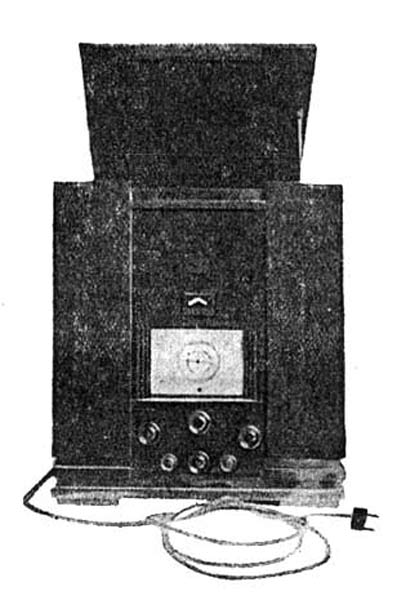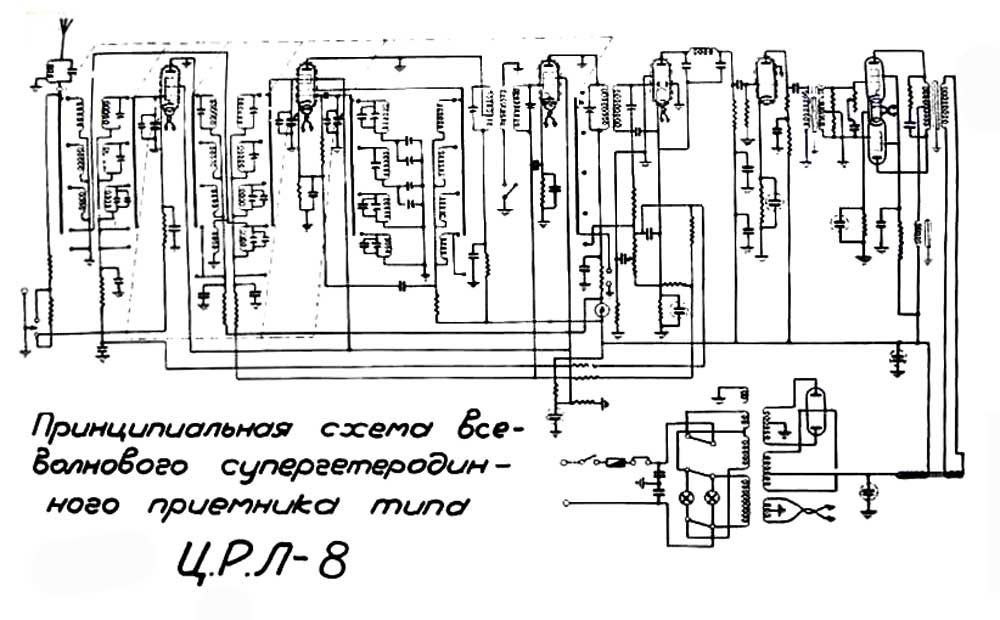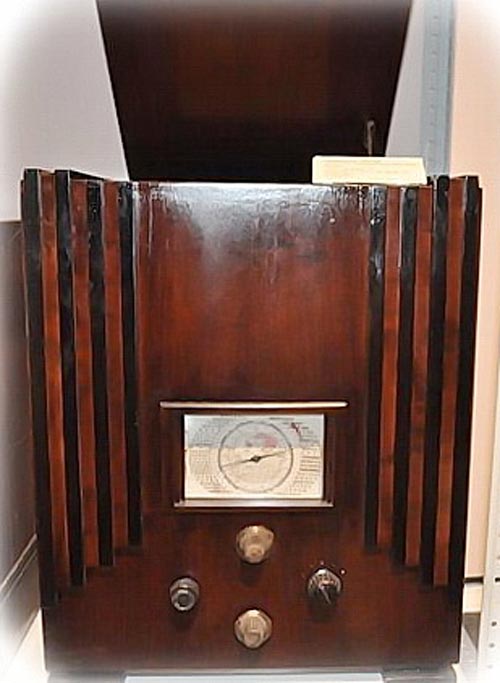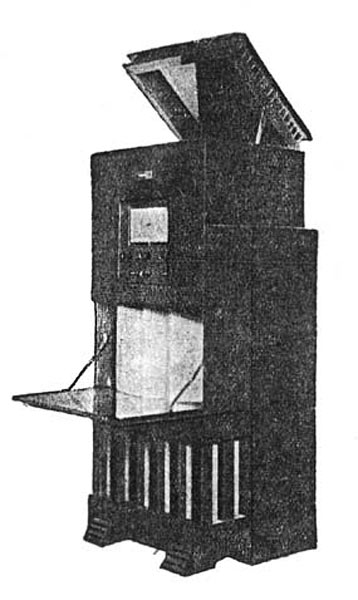Network lamp and radio receiver TsRL-8.
Network tube radiosDomesticFrom 1935 to 1937, the radio receiver for the network tube and radio "TsRL-8" was produced by the Leningrad Plant named after V.I. Kazitsky. The "TsRL-8" receiver was produced in a small series, and the radio receiver was produced by pieces. The model was quite complex and the factories subcontractors almost did not produce the necessary radioelements, which affected the small-scale production and the imminent termination of production. In any case, both devices are reflected in the reference books. The TsRL-8 radio receiver was developed at the end of 1934, and the radio receiver at the end of 1936. According to the electrical diagram, both models are the same, the differences, taking into account the use of the EPU, are only in the design of the case. The radio receiver "TsRL-8" (developed by the Central Radio Laboratory of Glavesprom, model No. 8) is a first-class broadcasting receiver of the superheterodyne type and, as an option (radio), in combination with an electrogramophone, a dynamic loudspeaker and a rectifier. Everything is mounted in a common case. The radio receiver and the radio is powered by 110, 120 or 220 V AC and covers the radio wave ranges: 17 ... 30 m, 30 ... 60 m, 200 ... 550 m and 714 ... 2000 m, that is, the receiver applies to the all-wave group. The laboratory samples of the receiver give a uniform sensitivity of 40 ... 50 μV on all ranges. Amplification at the received frequency of the receiver is carried out by one stage, operating with a high-frequency SO-182 pentode. The role of the local oscillator, the first detector and mixer is performed by a pentagrid of the CO-183 type. Amplification at the intermediate frequency is carried out by one stage, operating with a high-frequency SO-182 pentode. After amplification of the IF, the signals are fed to the diode part of the CO-185 type double diode-triode, which rectifies the signals. The resulting inverter voltage is fed to the control grid of the triode of the same lamp and amplified. Further, the LF is amplified by two SO-118 three-electrode tubes and a SO-187 low-frequency pentode operating in the final stage. The receiver has a device for automatic volume control, powered by the current from the diode part of the CO-185 lamp.


